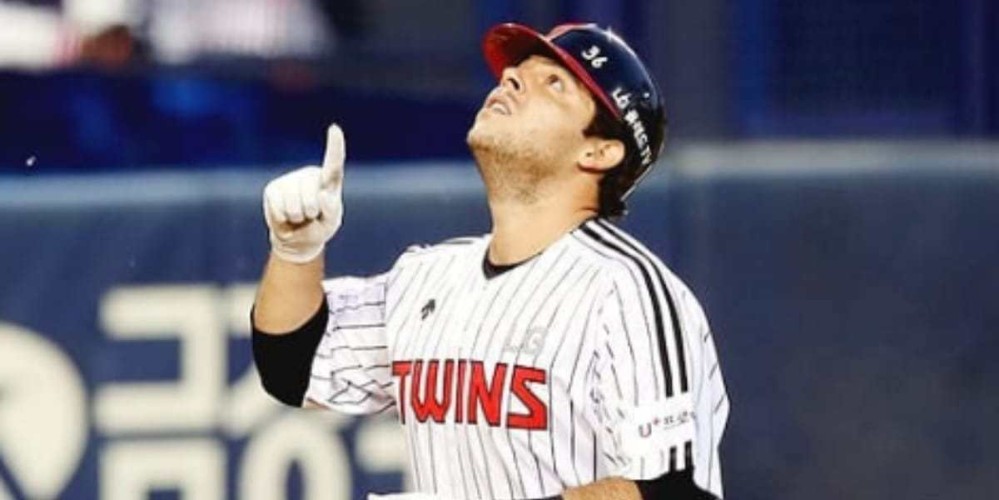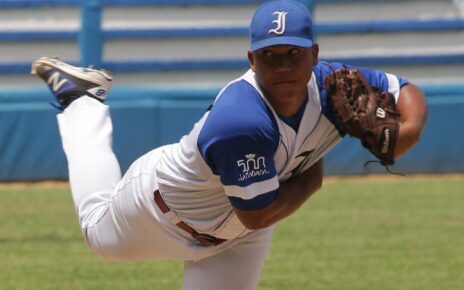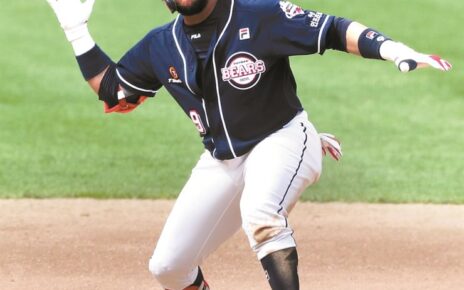Here’s what we learned after enjoying Roberto Ramos’ first 129 home appearances with the LG Twins this Korea Baseball Organization season: There is still no really viable plan to stop the swing of the talented Mexican hitter!
It doesn’t matter from what angle you check the statistics of his impact, because in every way, Ramos, 25, is breaking the league. His peripheral numbers reveal a line of .375/.442/.777, with 1.219 OPS and a crushing .402 ISO. That is devastating! Yes, so much so, do you know how many hitters have broken the .400 ISO barrier in the past 18 KBO seasons?: Only Eric Thames, when he averaged .409 (595 PAs), in his ’40-40′ season with the NC Dinos in 2015.
Since then, no other qualified hitter has been this close to Thames. For that reason, the great start of Ramos is becoming increasingly interesting in the KBO. In fact, when you turn to the analytical side and examine some advanced metrics, we find this: Ramos has recorded an amazing combination of power, strong contact, and Most Valuable Player production, with a .387 BABIP, .507 wOBA, and 205 wRC+.
True, we’re not even halfway through this KBO season, but it is shocking to what level Ramos’ potential rises. So if this is a good angle for you, let’s look through the FanGraphs filters: How many qualified hitters in the past two decades of the KBO have been able to log at least .380 BABIP, .500 wOBA, and 200 wRC+?
Jeong-soo Shim (Hyundai Unicorns) came close to achieving it in 2003, with 208 wRC+ and .501 wOBA, but his BABIP was just .287, almost .100 points less than Thames’ record of .390 BABIP in 2015 (.390 BABIP, .533 wOBA, 216 wRC+). That said, it is fair to stress that Roberto Ramos is having an incredible season in the annals of KBO history. But, we are just beginning the 2020 season. That obviously indicates that various trends will regress as plate appearances begin to accumulate for all hitters.
However, what if, even so, Ramos keeps breaking the league in his first KBO season? Are there trends that strongly suggest that Ramos’ swing can dominate throughout the year? Or will pitchers find the ideal formula to stop the talented Mexican hitter?
To answer that, we need to dive into the analysis of how Ramos is unraveling the league’s pitchers. While we have just 28.8% of the home appearances Roberto Ramos will need to be a qualified hitter this year, with the help of Statiz we have been able to delve into several more revealing trends.
The First Impact
We begin by analyzing the opposition’s first assault against Ramos was this season. How have the pitchers attacked Ramos? Will the pitchers totally change their plan against Ramos? What breakdowns of Ramos’ swing have already been exposed? Let’s analyze:
If you saw Roberto Ramos last season with the Albuquerque Isotopes of the Pacific Coast League, you know that his balance between plate discipline and power seems like virtues in progress. Ramos hit .309/.400/.580, with 30 home runs and 105 RBIs, a performance that revealed his focus in 503 plate appearances. Should there have been a doubt that Ramos would crush the KBO’s average fastball? Or, is it that Ramos has gone far above his previous level at the start of the season?
Of course, the rapid movement of his hands and a compact swing answered those questions. As you can see from the table above, the opposition is changing the strategic plan against the talented left-handed hitter, who was the 16th pick for the Colorado Rockies in the 2014 Major League Baseball Amateur Draft. Each percentage shows the ability of Ramos to put the ball in play. In his first 15 games, his swing crushed fastballs (79.5%), but he was also devastating against sliders (61.4%).
Additionally, Ramos hit sinkers (50%) without pressure but was less successful against curveballs (32.2%) and changeups (28.2%). In total, Ramos has averaged .444 against fastballs and .429 when a slider was thrown his way. However, the opposition, contrary to what their peripheral numbers show, seems to be finding relief. How? In a dose of curveballs mixed with changeups. While it’s easy to see the loss of his contact ability against the fastball in his last 15 games, the most considerable — and perhaps worrying — decline is Ramos’ regression against the curveballs, falling from 32.2% to 13.3%.
Thanks to the hard work of the folks at Statiz we can appreciate the finer details of Ramos’ weakness. Ramos’ problem could not be categorized as serious against curveballs this year. But if we analyze his initial surge, the opposition is already exploring a formula to try to stop him. Will curveballs be enough to solve Ramos’ swing? It is not so easy, and less against Ramos, who has shown to have great hand-eye coordination and an ability to hit most pitches.
In other words, if pitchers tray from the inside of the zone they run the risk of Ramos punishing their offering no matter the pitch type. However, we also learned through these displays of strengths and weaknesses that pitchers who can command and maintain their location have a better shot against the Twins slugger.
Each average highlighted with the color “blue” shows a possible fault in Ramos’ swing. Almost all of them are on the inside, both low and high. That’s where they have done the most damage to Ramos, although it has been minimal damage at best. However, when the pitcher comes off the inside just a little bit and grazes the zone Ramos has crushed the opposition. The truth of the matter is that it’s hard, in the present time, to find faults in Ramos’ swing. In fact, the brilliance of Ramos in every situation when he rises to the plate continues to amaze.
Certainly, if you cover the columns where Ramos’ batting averages appear against curveballs and changeup in different situations, we find ourselves a beastly swing! Ramos’ special focus on fastball defines him as a fastball eater. And while we can’t say the same against breaking pitches, his impact against sliders sounds good: During his first 30 games of 2020, he hit .556 when he found the bases clean and .500 at an even count. So, will pitchers change up the formula and add more of the breaking pitches that have done the most damage to Roberto Ramos’ swing? If they do, will the talented Mexican hitter make the adjustments in time to erase the slight holes in his swing?
After analyzing every detail here, this is what we learned: The opposing pitchers should not Ramos any fastballs. Never exclude changeups and curveballs from their approach. Try peppering the outer zone with sliders. But remember that the success of the mix is in the command. If the change in approach doesn’t work and Ramos is able to keep up his pace, the fascinating start we’re seeing from Ramos will play out like the first strike of the bat on a loud comebacker.
Lead photo courtesy of Unknown – Unknown




